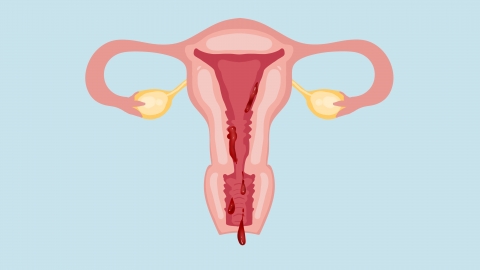What causes bleeding during ovulation?
Generally, bleeding during ovulation may be caused by a temporary drop in estrogen levels, vigorous exercise, endometritis, cervical polyps, submucosal uterine fibroids, or other factors. It is recommended to seek timely medical advice to identify the underlying cause and receive appropriate treatment under a doctor's guidance. Detailed explanations are as follows:

1. Temporary drop in estrogen levels: During ovulation, the follicle ruptures, causing a sudden decrease in estrogen levels in the body. The endometrium loses hormonal support and partially sheds, resulting in slight bleeding. This is a normal physiological phenomenon that does not require special treatment. It is important to rest adequately, maintain external genital hygiene, and avoid strenuous activity.
2. Vigorous exercise: During ovulation, the pelvic region is in a state of congestion. Strenuous activities, such as running or jumping rope, may stimulate pelvic tissues and cause minor bleeding. It is advisable to reduce physical exertion, opt for gentle exercises such as walking or yoga, and avoid high-intensity workouts during the ovulation period to prevent worsening of bleeding.
3. Endometritis: Bacterial infection of the endometrium causes inflammation. During ovulation, the endometrium becomes congested and fragile, making it prone to bleeding. This is often accompanied by lower abdominal pain and increased secretions. Patients may follow medical advice to use medications such as cefixime dispersible tablets, metronidazole tablets, or levofloxacin hydrochloride capsules to control the infection.
4. Cervical polyps: Excessive growth of cervical mucosa forms polyps. Hormonal changes or physical contact during ovulation can easily cause bleeding from the polyps, manifesting as spotting. Patients can undergo cervical polypectomy to remove the polyps. This procedure directly eliminates the lesion and prevents recurrent bleeding. Regular follow-up examinations are necessary after surgery.
5. Submucosal uterine fibroids: Fibroids growing into the uterine cavity affect normal endometrial shedding. Hormonal fluctuations during ovulation may easily trigger bleeding, which may be accompanied by increased menstrual flow. If the fibroid is large, it can be removed via hysteroscopic myomectomy, which restores the normal structure of the uterus.
In daily life, it is important to maintain good menstrual hygiene, change sanitary products frequently, and avoid unhygienic sexual practices. Diet-wise, reduce the intake of spicy and irritating foods and consume more fresh fruits and vegetables rich in vitamins to help maintain bodily stability and reduce the occurrence of ovulatory bleeding.




